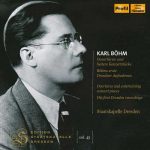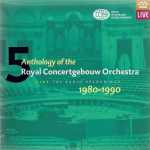
Composer: Johannes Brahms, Franz Peter Schubert
Orchestra: Staatskapelle Dresden
Conductor: Sir Colin Davis
Format: FLAC (tracks)
Label: Profil Medien
Catalogue: PH08043
Release: 2010
Size: 277 MB
Recovery: +3%
Scan: yes
Schubert: Symphony No. 8 in B minor, D759 ‘Unfinished’
01. I. Allegro moderato
02. II. Andante con moto
Brahms: Symphony No. 3 in F major, Op. 90
03. I. Allegro con brio – Un poco sostenuto
04. II. Andante
05. III. Poco allegretto
06. IV. Allegro – Un poco sostenuto
The evenings of October 22 and 23, 1992 in the Dresden Semperoper brought not only performances for the Dresden audience but were at the same time the start of an extensive tour from October 25 to November 12, during which the Staatskapelle under Sir Colin Davis performed twelve concerts in Japan. The Staatskapelle seems once more to have tapped the pulse of the Japanese audience with their interpretations and so affirmed their reputation.
The ever-active Colin Davis conducts the Staatskapelle Dresden in two major works by two great symphony composers. Interestingly, these seem to represent opposite ends of the spectrum in terms of showcasing each composer’s talents. Schubert’s Symphony No. 7 in B minor, or the “Unfinished” symphony, is a musically moving, engaging work that is very accessible. Davis and the Staatskapelle do a wonderful job in bringing this work to life, thanks to their keen musicianship and careful phrasing. The first movement is barely audible in the beginning, but once the familiar theme arrives, it is played with such attentiveness and cleanliness that it sounds fresh and new.
The forte is played truly forte, but it never sounds less majestic. In fact, the whole piece is played with a certain sovereign style that is precise and elegant. Even the returns of the themes and the repeats are welcome because the orchestra pays close attention to details. The Andante is not unlike Beethoven in its graceful character, and when there is a dramatic passage with a lot of counterpoint, it is extremely exciting to hear this contrast. Davis seems to really know what he wants to get out of the music, and the orchestra seems to be able to give it to him. The only general complaint one could make is that the tempos seem to be a bit slow; however, they are never lacking in energy. Despite this talented group of musicians, Brahms’ Symphony No. 3 does not succeed as a memorable work by this most memorable of composers. Compared with such stunning, varied works as his violin concerto, Requiem, and his heartbreakingly tender lieder, this work simply does not do Brahms justice.
Though there are bright brass and turbulent strings in the first movement, and sweeping passages of strings in the second movement, one cannot help but feel a bit bored. One could possibly fault the orchestra and conductor at times, for the Allegretto does not feel like an allegretto (though the oboe melody is poignant) and there is not as much energy as the Schubert. It is only in the Allegro when this truly feels like a work by Brahms: there are passionate, shrieking strings; full brass; and an active orchestra. The symphony feels rather rambling, unstructured, as though it is searching for its meaning. One can only forgive such a prolific, gifted composer who wrote so many pieces of music that are not forgotten even today.



